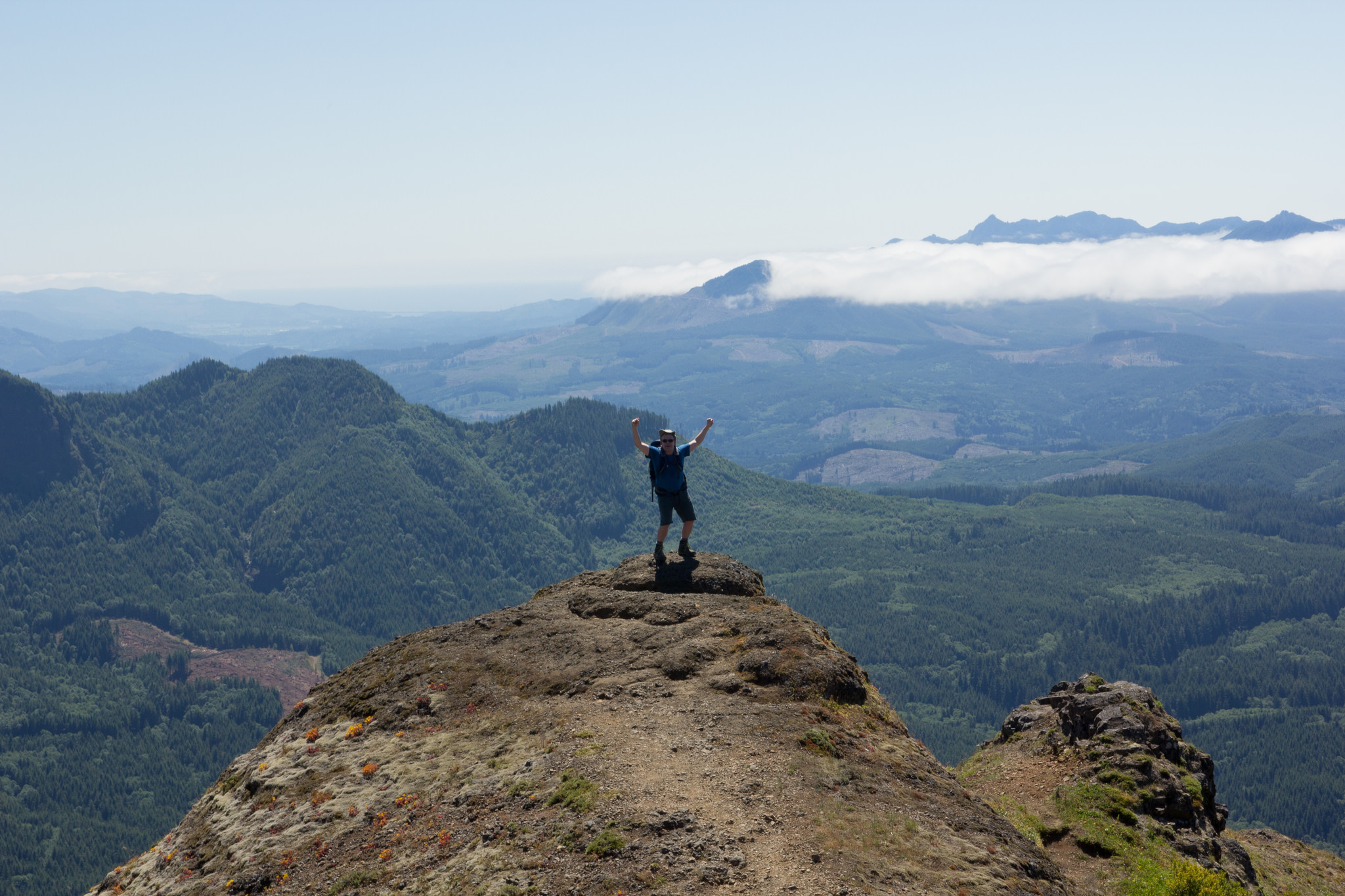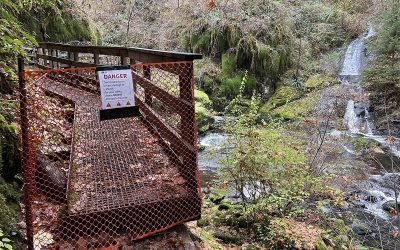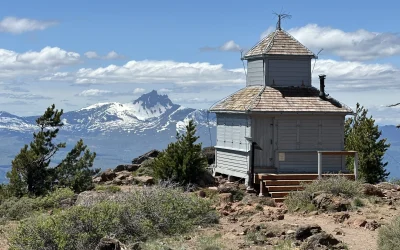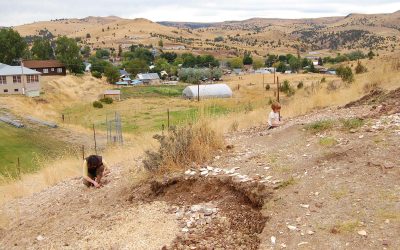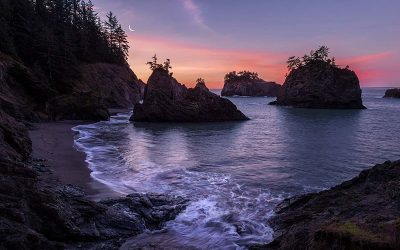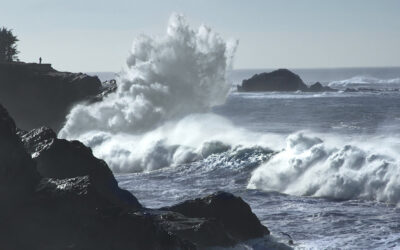Nestled along the beautiful Oregon Coast, Seaside is a small but vibrant city with a population of just over 7,000 people. Known for its stunning beaches, charming boardwalk, and family-friendly attractions, Seaside is a prime destination for locals and tourists alike. While the sandy shores and seaside ambiance are a major draw, Seaside also serves as the gateway to some of the most remarkable outdoor adventures in the state.
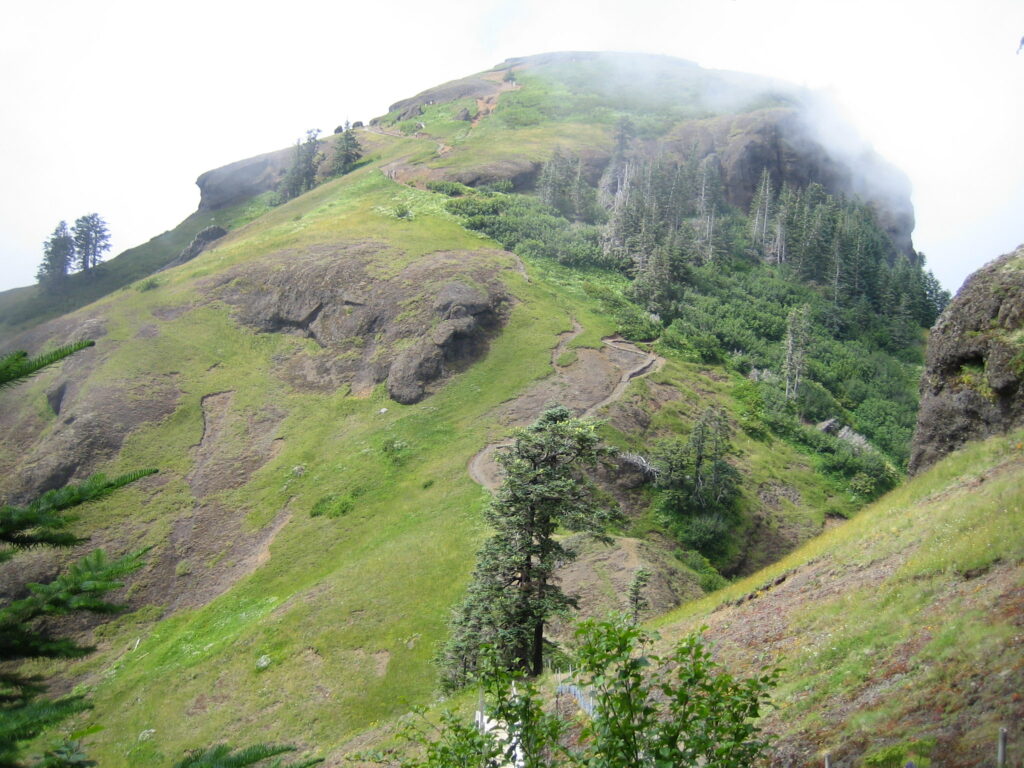
Granger Meador / Flickr
For those seeking an unforgettable hiking experience, Saddle Mountain offers a challenging but rewarding trek just a short drive from town. Whether you're a seasoned hiker or simply looking for an adventure with breathtaking views, the Saddle Mountain Trail provides a glimpse into Oregon's rugged coastal beauty.
RELATED: 17 Oregon Coast Hikes That Will Leave You Speechless
The Saddle Mountain Hike: An Overview
Saddle Mountain, towering at 3,290 feet, holds the title as the highest peak in northwest Oregon. This hike is no easy feat—it’s a challenging 4.7-mile out-and-back trail that features a steep 1,640-foot elevation gain over just 2.5 miles. It’s rated as difficult, so this trail is best suited for experienced hikers or those ready to tackle a steep climb. But don’t let the challenge scare you off—the reward at the summit is one of the best panoramic views you’ll find in Oregon.
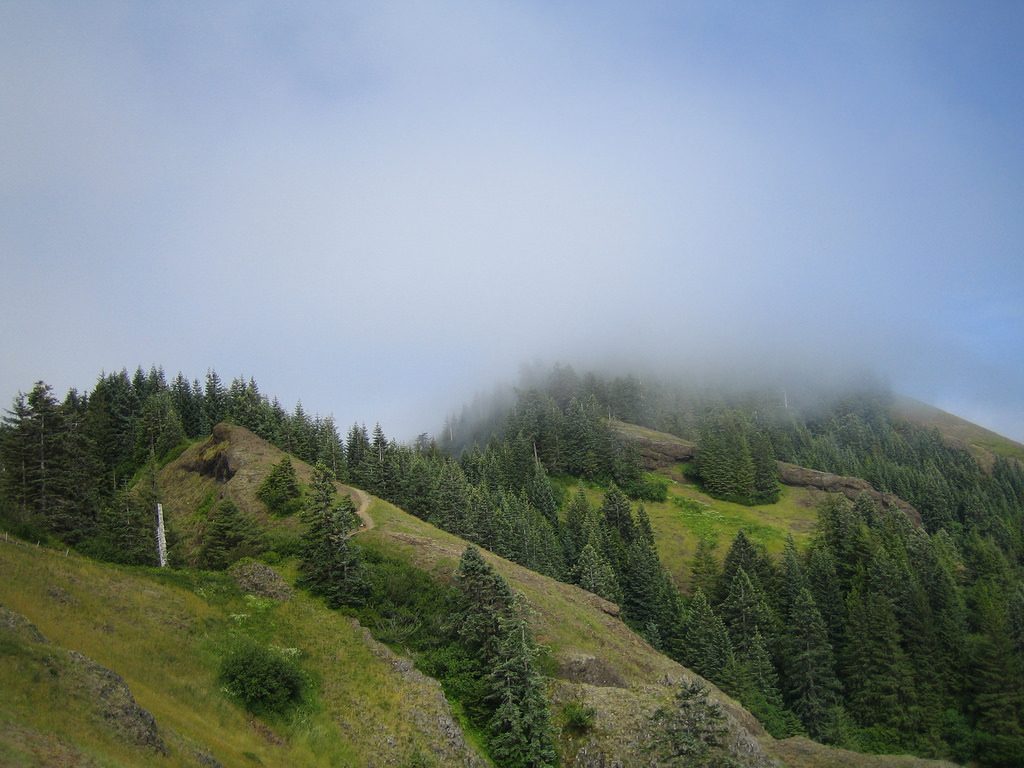
From the top, you’ll be treated to a 360-degree view that stretches from the Pacific Ocean to the Columbia River and beyond. On a clear day, you can spot distant peaks like Mount Hood, Mount St. Helens, Mount Adams, and Mount Rainier. The coastal range unfolds below you, and in every direction, you’ll find yourself immersed in Oregon’s natural beauty.
Do you love Oregon?
Sign up for monthly emails full of local travel inspiration and fun trip ideas. In each newsletter we'll share upcoming events, new things to do, hot dining spots and great travel ideas.
Starting the Hike
The trailhead for Saddle Mountain is conveniently located just a few miles off U.S. Highway 26, making it easily accessible for those traveling from Portland or the coast. The hike begins relatively gently, winding through dense coastal forest before the trail starts to zig-zag upwards after about the first mile. Don’t be lulled into a false sense of ease by the initial stretch—the trail becomes progressively steeper and more demanding as you ascend.
Last year, I attempted this hike in early November but had to turn back when the steep sections became iced over and too treacherous to navigate. This year, I returned when the trail was dry and more manageable. Even then, it was no walk in the park. People who say it’s not difficult must be seasoned pros, because this trail is steep, narrow, and slippery in places. As you approach the saddle, the path levels out briefly before plunging into a steep descent between the two peaks, only to climb steeply again toward the summit.
Wildlife, Wildflowers, and Scenic Beauty
Saddle Mountain isn’t just about the stunning views at the summit—the journey itself offers plenty of natural beauty to appreciate. During the spring and summer months, the open grassy slopes are covered in a variety of wildflowers, transforming the landscape into a vibrant canvas of color. May and June are the best times to witness this spectacle, as the meadows explode with blooms.
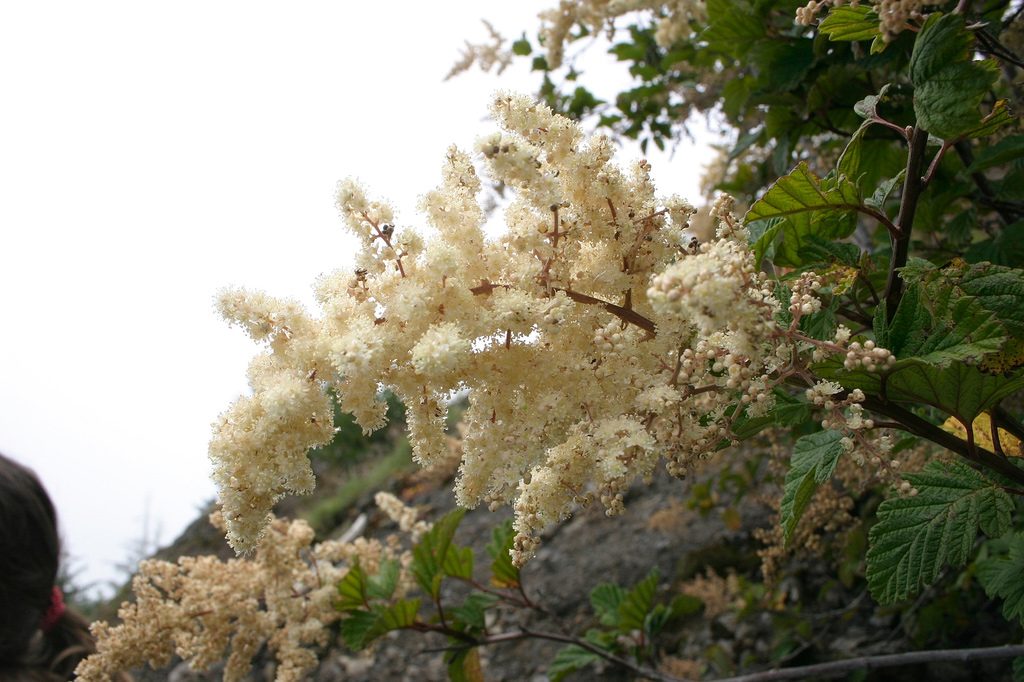
Wildflower enthusiasts can expect to see rare species like the Saddle Mountain bittercress, frigid shootingstar, and hairy wildrye. The flora is a mix of the delicate and the robust, with blooms like the Rosy Lewisia and Queen-of-the-forest dotting the mountainside. Nature lovers will also appreciate the unique mosses, liverworts, and lichens that thrive in this microclimate. On my hike, I noticed a few late-blooming flowers and even a patch of wild mushrooms—a reminder of the diverse ecosystem that thrives on the mountain.
The mountain is also home to some rare fauna, including the Silverspot butterfly, reintroduced in 2018, and Cope’s giant salamander. While you’re unlikely to spot them during your hike, just knowing these species inhabit the area adds to the magic of the place.
A Word About Dogs and Safety
While many areas near Saddle Mountain welcome dogs, this particular trail is not the best choice for bringing along your furry companion. During my hike, I noticed several hikers attempting to navigate the steep terrain with small dogs, including a terrier and a miniature poodle. Unfortunately, these pups were struggling just a short distance into the trail. The ground is covered with wire mesh in certain sections to provide extra traction, but this can be rough on a dog’s sensitive paws. The mesh has sharp edges and, in some places, has rusted or frayed, posing a real risk of injury. More than once, I’ve seen hikers having to carry their dogs back down, so it’s safer to leave pets at home or in a cool car if the weather permits.
Additionally, this trail isn’t recommended for small children due to the narrow sections and steep drop-offs. Fall risks are real, and the cliffs on both sides in some areas make it difficult to pass others. Even strong hikers should come prepared with proper hiking gear—sturdy boots, layers, and trekking poles for stability. In the colder months, bring ice cleats for added traction, as parts of the trail can become slick with ice.
Tackling the Summit
The final push to the summit is the most strenuous part of the hike. After crossing the saddle, you’ll begin a steeper climb, with sections that require scrambling over boulders. The summit rewards your effort with a viewing platform enclosed by steel railings, ensuring safety as you take in the jaw-dropping panoramic views.
On a clear day, the view extends in every direction—from Tillamook and the Pacific Ocean to the southwest, all of Astoria to the west, and even into Washington, where you can see the Astoria Bridge and Rice Island. To the northeast, Mount Rainier, Mount St. Helens, Mount Adams, and Mount Hood make a striking appearance on the horizon. These views are what make the grueling climb so worthwhile.
Hiking in the Colder Seasons
Though Saddle Mountain is particularly popular in spring and summer, hiking in the colder seasons offers a different kind of adventure. On my first attempt in November, icy patches on the steepest sections forced me to turn back before reaching the summit. If you’re planning a winter hike, be prepared for colder temperatures, snow, and ice. The trail can become quite slick, and ice cleats are essential for navigating the higher elevations. The serene quiet of winter, along with snow-dusted peaks, creates a peaceful atmosphere that’s hard to find in busier seasons.
However, winter also comes with challenges. Be sure to check trail conditions and come prepared with layers to combat the unpredictable weather. The summit can be exposed to strong winds, so a windproof jacket is a must.
Scenic Alternatives
If the rigors of the main trail are too much for you, there’s a more accessible option just a short walk from the Saddle Mountain trailhead. The Humbug Mountain viewpoint trail is only a quarter-mile from the parking lot and offers beautiful views without the steep climb. It’s a great alternative for those who want to experience the beauty of the area without tackling the intense elevation gain of the Saddle Mountain summit.
Stay Safe and Be Prepared
Safety is always a priority when hiking in the Oregon Coast Range. This region is home to the densest population of mountain lions in Western Oregon. Though sightings are rare, it’s wise to hike in groups and remain vigilant. Be sure to pack plenty of water and snacks for the journey, and layer your clothing as the weather can change quickly at higher elevations. Sunscreen is also a must, even on cloudy days.
After the hike, do your feet a favor and keep a pair of comfy shoes and clean socks in the car—your tired toes will thank you after the long trek back down.
Directions and Access

Getting to Saddle Mountain is relatively straightforward. From U.S. Highway 26, the signed turnoff for Saddle Mountain is about 10 miles east of U.S. 101. From there, you’ll drive seven miles on a narrow, paved road to the trailhead. Parking is available at the trailhead, but it can get crowded, especially during peak seasons. There’s also additional parking along the road if needed. Be aware that there is a small fee for parking, so bring cash or a state parks pass.
Final Thoughts
Saddle Mountain is more than just a hike—it’s an experience that showcases the rugged beauty of Oregon’s coastal range. Whether you're marveling at the wildflower-studded meadows or soaking in the panoramic summit views, this trail offers something for every nature enthusiast. While the hike is challenging, the sense of accomplishment and the unforgettable vistas make it all worth it.
For anyone visiting Seaside or the surrounding area, the Saddle Mountain hike is a must-do adventure that truly captures the magic of the Oregon Coast. So lace up your boots, grab your gear, and prepare for an unforgettable journey to one of the most beautiful spots in the state.

